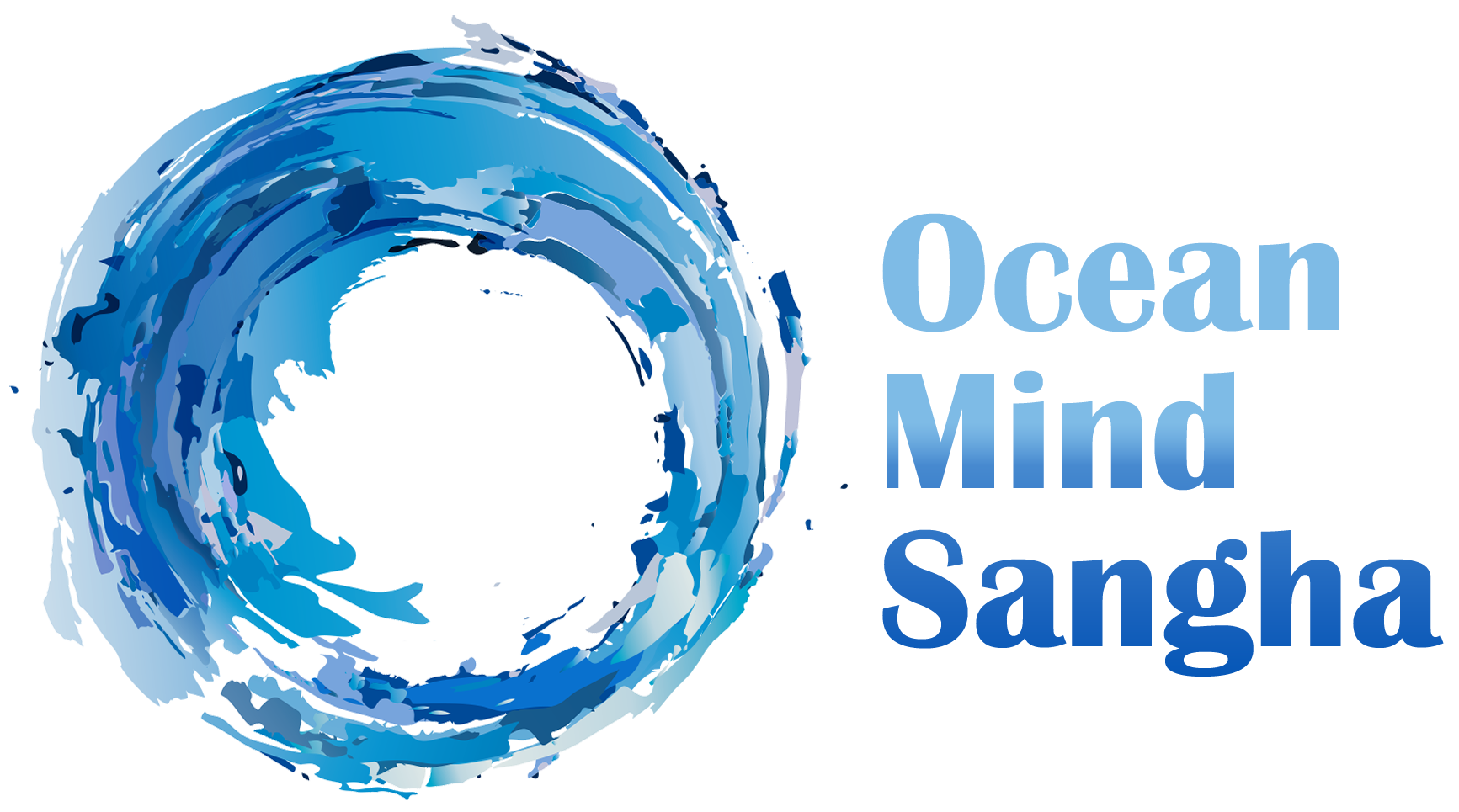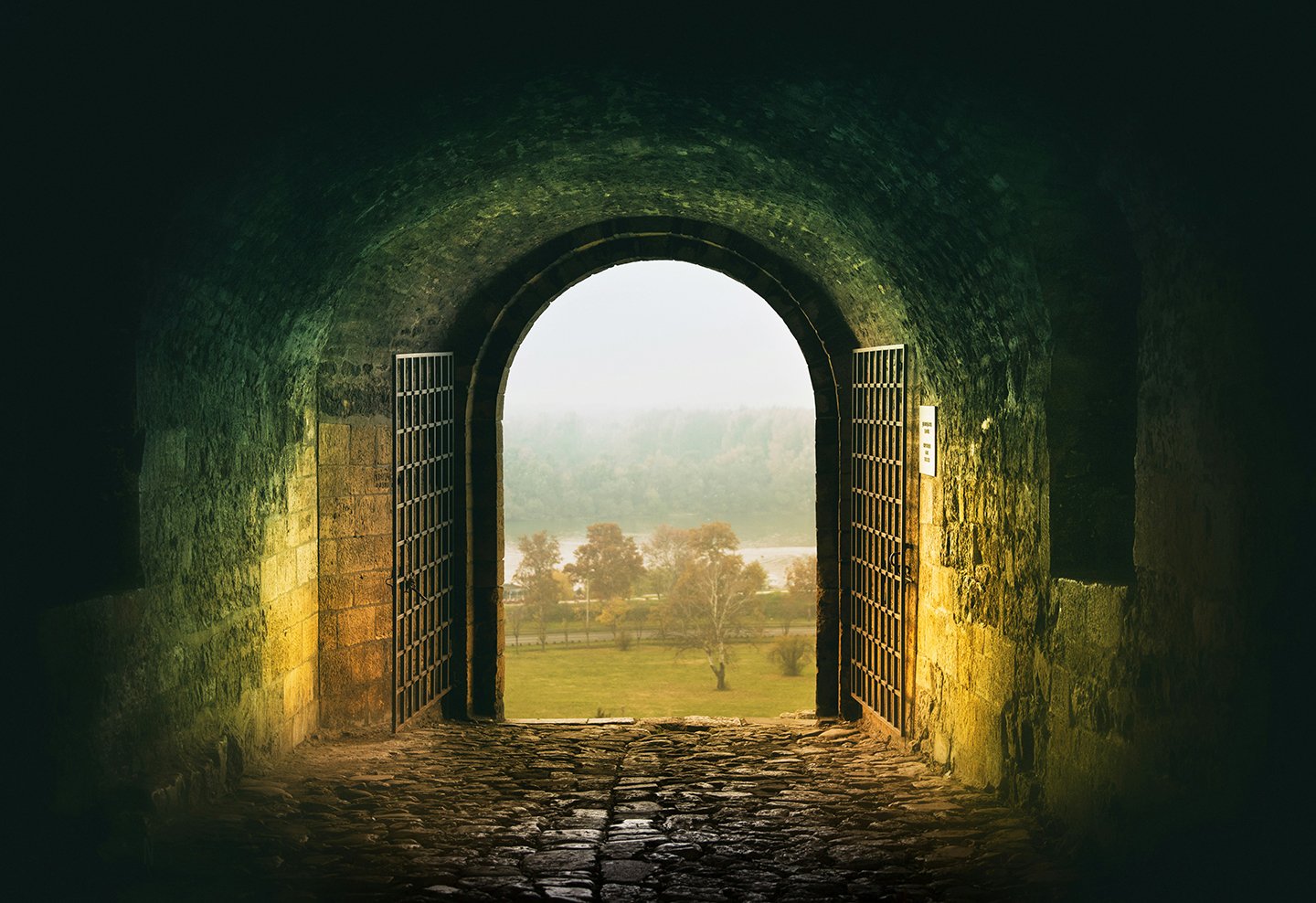From Obstruction to Gate
Photo by Nikola Knezevic
We say this often, Be present. But what does it really mean to be present? How can we be present to the teachings offered to us in every moment or even just this very moment?
Zuisei guides us through the Dutiyakālasutta, a Buddhist teaching from the Pali Canon that, through four steps, shows how, with care, patience, and faith in ourselves, we can simply and actively pay attention, allowing our life to be as full, rich, and purposeful as it is.
This talk draws on the koan from the True Dharma Eye, Case 111, Fayan’s Eye of the Way, the Dutiyakālasutta and the work of author Ursula K. Le Guin and poet Hillary-Anne Farley.
This talk was given by Zuisei Goddard. See below for transcript.
Transcript
This transcript is based on Zuisei's talk notes and may differ slightly from the final talk.
Friends, when these four times are rightly developed and progressed, they gradually lead to the ending of sorrow and confusion. What four? A time for listening to the teaching, a time for discussing the teaching, a time for serenity, and a time for discernment.
It’s like when it rains heavily on a mountain top, and the water flows downhill to fill the hollows, crevices, and creeks. As they become full, they fill up the pools. The pools fill up the lakes, the lakes fill up the streams, and the streams fill up the rivers. And as the rivers become full, they fill up the ocean.
In the same way, when these four times are rightly developed and progressed, they gradually lead to ease, joy, and wisdom.”
Here in Playa del Carmen, as in so much of the world, we’ve been going through a heat wave. Not the scorching temperatures they’ve had in Pakistan or California, it’s been in the high 80s and low 90s here, but the heat index has made it feel more like 102. With the heat has come the rain, pelting,lashing rain—not unlike the summer storms I would get caught up in when I was growing up, but I think that maybe I’m noticing the rain more now because I’m high up and surrounded by glass. I often feel immersed in it, drenched in it. And because it’s so sunny here, and because there’s been rain, there have been rainbows, lots of them. Yesterday there were three, side to side.
I’ve never seen so many rainbows, together or so frequently. I’ve never seen so many sunrises (not because they didn’t happen, of course, but because I didn’t live in a place where I could see them). Sunsets, moonrises, lightning over the water, and clouds huge and dark like walls, there one moment and gone the next. My days are filled with dayness. They’re filled with fullness, which is what I’ve always wanted of my days, and what I’ve always wanted for others. As I was thinking of this I started thinking about what gets in the way. What gets in the way of water flowing downhill to fill the hollows, the crevices, and the creeks and the creeks becoming full and filling up the pools, the pools filling up the lakes, the lakes filling up the streams, and the streams filling up the river then filling the ocean, the ocean of life, of mind, of heart. I was wondering about what gets in the way of this happening.
In the Fall of 2006 I became shuso, chief disciple, at Zen Mountain Monastery. My task was to lead the sangha through example, through the example of my practice, my vow, my willingness to not know. My success was middling, I’d say, since I thought I knew more than I did. That’s one nice thing that’s come with age and time, I’m less likely to think I know and much, much less likely or willing to be certain. At the end of three months of training, which we should consider doing, together, by the way, the Ocean Mind Sangha. At the end of the three months of training I had to give my first talk. I chose a koan by Fayan, one of my favorite teachers. He was known for repeating a student’s answer, or repeating a question, and having that be his answer. He doesn’t do that in this koan, but he uses a play on words that speaks nicely to what I’ve been contemplating:
Once Zen Master Fayan had the well uncovered and he saw that the outlet was clogged up with sand.
He said to a monk, “When the eye of the spring is obstructed, sand is in the way. When the eye of the Way is obstructed, what is in the way?”
The monk couldn’t answer, so Fayan answered for him, “The eye is in the way.”
I worked on this koan diligently, which is another way of saying, though I didn’t know it at the time, that it worked on me. I sat and sat with it, and I read my teacher Daido Roshi’s commentary, and I read about Fayan, and I sat some more, but I couldn’t see it, I couldn’t see it, I couldn’t see it. Then, the night before I was supposed to give my talk, my teacher passed me on it, effectively saying, “You’ve seen it.” But I don’t think I had, not really. I think my teacher took pity on me, because here I was, about to give a talk in front of a hundred people or so and I should feel at least mildly confident that I knew what I was doing. The reason I appreciate koans so much is that they keep unfurling with time, just like a good poem. At first you read the words, or you hear the words and you think you understand their meaning, then you begin to spend time with them and you realize you actually have no idea what they’re pointing to, but then you spend more time and slowly something begins to happen. The rain begins to fill the hollows, the crevices and creeks. You begin to be filled with the truth of Fayan, and the monk who doesn’t understand the well, and the eye of the well. You realize that the eye is your eye and your I. Slowly, slowly, you begin to understand what is in the way of your life.
Many years ago, when I was living at the monastery, a friend and fellow student who was quadriplegic came for sesshin. Nenshin was his name. He had a special van that fit his chair. At the end of the week, when sesshin had ended, he asked if I could get his van from the parking lot and drive it to the entrance for him. The van had a ramp that was operated by a pneumatic pump, and it was a bit of a thing to operate the pump while the van was moving. The motor had to be on and you had to know when to turn off the pump so the pressure wouldn’t rise too high. I drove the van, and when I parked it, a friend was standing outside with Nenshin.
“I didn’t know you could drive Nenshin’s van,” she said.
Without thinking, I answered, “I didn’t know that I couldn’t.” It was a very spontaneous moment, it wasn’t hubris, I truly hadn’t thought about the difficulty, about what I knew and didn’t know, and so I wasn’t limited by either.
Friends, when these four times are rightly developed and progressed, they gradually lead to the ending of sorrow and confusion. What four? A time for listening to the teaching, a time for discussing the teaching, a time for serenity, and a time for discernment.
This is from the Dutiyakālasutta. The first time, the time of listening to the teaching is a time of receiving, and in order to receive, you have to be open. There’s that well-worn story of the student who goes to see the teacher, who offers her tea. And as the teacher is heating up the water, measuring the tea leaves, setting out the cups, the student goes on and on about this and that sutra, this and that teaching, this and that insight she’s had when contemplating this and that teaching. When the tea is ready, the teacher picks up the pot and she starts pouring water into the student’s teacup. She pours and pours and she keeps pouring until the water is overflowing, spilling over the table and onto the student’s lap, who jumps back with a cry and says:
“What are you doing? Don’t you see the cup is full?”
“I do see,” the teacher says. “Very full. Then how do you expect me to teach you?”
But this knowing is not just the knowing of arrogance, which is overt, it is every bit of knowing. It’s every time our partner, or our child, or our parent looks at us a certain way and we think, Oh, I know what they’re going to say or I know what they’re thinking. It’s every time we think we know who we are and what we’re capable, or not capable, of. It’s every time we say, without thinking, without even recognizing this is what we’re doing, This is a sunrise, a compliment, a piece of cake, a bigot, not because there are no sunrises or bigots in the world, but because there is another way of being with these and all things. In Buddhism being with is really just being. You can’t be a thing or a feeling or another person when your cup is filled to the brim.
But the other kind of filling (described by these four times: listening to the teaching, discussing the teaching, a time for serenity, and a time for discernment), although it sounds rational, and progressive, I think about it more as immersing myself in a body of water, and with each step, I go deeper, and the water rises higher, until it’s all around and below and above me and I cannot tell where I end and it begins. This is how to listen to the teaching, how to discuss the teaching, with others or yourself, how to spend quiet time with what you’ve heard, and how to discern what you’ve heard. It’s not a matter of logic, although logic is helpful. It’s not a matter of knowing all the technical Buddhist terms, or being able to quote this or that sutra, this or that teaching. It’s a matter of becoming the thing that you’re trying to understand. Do you understand?
That’s why I love the story of the bricklayer so much, from the story “Things” by Ursula Le Guin. Faced with the end of the world, and having had a vision of islands lying just beyond the horizon, the bricklayer decides, “I’m going there.” See, he knows that past the edge of what he can see, is his liberation. But how does he know that? He can’t see the islands, so how does he know? And then, how does he decide to do something that doesn’t make sense? Build a road of bricks going straight into the ocean? He can’t possibly know where his road is leading or how far it will take him. He doesn't have any way of ensuring that his back-breaking work will pay off. He doesn’t have a teacher either, he has no one to ask, no one to reassure him that everything will be okay, it may not be. Yet every morning he makes his way down to the shore and slips into the water, and lays down a brick, and then another, guided by nothing but trust in something he cannot see or touch or explain. Like a Zen student.
We can’t stand on the shore and measure how many bricks or how long the road is going to be. If we do, we’ll never begin, because we’ll conclude, rightly, that it’s impossible. Well, I’ll tell you that standing on the shore, it’s definitely impossible but the view changes once you’re in the water. We’re each of us bricklayers, laying down our road as we walk it. The road is submerged in water or it runs through the middle of a desert or the jungle. Or it’s thick with brambles that we have to chop up or it’s nowhere to be seen because it’s dark where we’re standing. What can we do, then, but take a brick, and weigh it in our hand, and set it down, carefully, before we step, and test whether it holds our weight. If it does, we take another brick, and we set it down, and in this way we make a path.
If we’re lucky enough to be able to stand at the end and look back, we’ll see that it looks nothing like we thought it would, or just a little like we thought it would, because the imagined pales in the face of the possible, especially when the possible includes practice and liberation. So, these four times:
A time for listening to the teaching,
a time for discussing the teaching,
a time for serenity,
and a time for discernment
As I said, the first is a time to receive. The second is a time to reflect. The third is a time to be still. The fourth is a time to investigate. This fits very nicely with the way we train, doesn’t it? First we have to empty our cups so we can hear the teachings, and it really means emptying. You wouldn’t pour tea into a glass that had orange juice without washing it first. You want the container to be empty, and you want it to be fresh so it won’t color what you next put into it. Then we contemplate the teachings. What was said? What did I hear? How does this relate to my life, not later, when I’ll have more time or better circumstances in which to practice, but right now, the only time that I have? Then we still our body and mind so the words can really sink in. We may have to hear them a hundred times, a thousand times, so that, on the 1,001st, we actually hear them.
I’ve always liked that simile for the first jhana:
Suppose a skilled bath attendant or his apprentice were to pour soap flakes into a metal basin, sprinkle them with water and knead them into a ball, so that the ball of soap flakes would be pervaded by moisture, encompassed by moisture, suffused by moisture inside and out. In the same way, one drenches, steeps, saturates, and suffuses one’s body with the rapture and happiness born of seclusion, so that there is no part of one’s body that is not suffused by rapture and happiness.
It’s active, it’s engaged.
Then we investigate. You have been doing this with the questions you bring to our sessions, the emails you write me after a talk or a study session. Some of you say, “I’m slow, I need time to let things sink in.” Take all the time that you need. Be time, be the question in time. When you return, days or weeks later, and ask about something we brought up, it lets me know that you’re listening, actively listening and that you’re working to bring these words to life in your life. Meister Eckhart said, “The eye with which I see God is the eye with which God sees me.” The eye of the way is the way. It may seem like it’s an obstruction, and it is. It is also the way. How can that be? How do we go from obstruction to gate?
Here’s a hint. This poet, by the way, is five years old.
"Sun Goes Up"
by Hilary-Anne Farley
I love the juice, but the sun goes up; I see the stars
And the moon-star goes up,
And there always goes today. And the sun
Loves people. But one always dies.
Dogs will die very sooner
Than mummies and daddies and sisters and
brothers because
They’ll not die till a hundred and
Because I love them dearly.
Explore further
01 : Dutiyakālasutta translated by Bhikkhu Sujato
02: The True Dharma Eye: Zen Master Dogen's 300 Koans (Case 111, Fayan’s Eye of the Way) translated by Kazuaki Tanhashi with commentary and verse by John Daido Loori
03 : Transitions by Vanessa Zuisei Goddard


